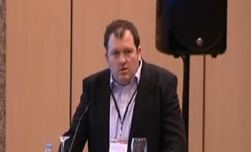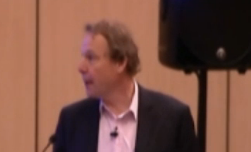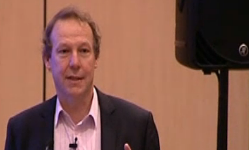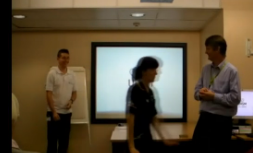Description:
The role of poorly maintained ventilation ductwork in spreading airborne infections is largely ignored because it is ‘out of sight out of mind’, but recent analysis by healthcare professionals confirms that the risks are increasing.
Ghasson Shabha will identify particular threats in healthcare facilities from dirty ductwork. He also points out that fewer than 5% of building air-conditioning systems have been inspected despite regulations making this mandatory. Dr Shabha will look at how planned cleaning strategies can reduce risks and how hospitals can use 3D building information modelling software to identify ‘infection hotspots’.
The healthcare environment can be described as a reservoir for potentially infective agents which can spread unpredictably in a whole array of ways particularly in ventilation and air-conditioning systems making it difficult to effectively control and manage, for those seeking timely information about the patterns of cross-infection. The severity of the problem has been highlighted extensively over the past decade, as part of wider umbrella of what was known as health care acquired infections (HCAIs). Airborne transmission extends over a wide spectrum, and includes many prevalent agents, inter alia Mycobacterium tuberculosis (TB),nosocomial MRSA, Aspergillus fumigatus, Serratia marcescens, norovirus, and other airborne infection.
Dr Shabha was speaking live from Birmingham and this CIBSE ASHRAE Group (cibseashrae.org) webinar was co-sponsored by the B&ES Ventilation Hygiene Group and the Institute of Healthcare Engineering and Estate Management (IHEEM).
CIBSE ASHRAE Group – Unclean, unclean! Health threats from ventilation and air conditioning – 14th Nov 2012 from Tim Dwyer on Vimeo.
Medical and Patient education videos
-
Title
Description
-

Part 8 of the Management of chronic and allergic pulmonary aspergillosis. Clinical failure and management – how to manage patients who have not responded to standard antifungals. by Prof David Denning. As presented at the 5th AAA meeting in Istanbul 25th January 2012.
-

Management of allergic and chronic pulmonary aspergillosis. Toxicity of tri-azole antifungals. Dr Caroline Baxter at the 5th Advances Against Aspergillosis..
-

Management of chronic and allergic pulmonary aspergillosis. Masterclass part 6 Antifungal side effects and toxicities. Prof Denning & Dr Caroline Baxter at the 5th Advances Against Aspergillosis.
-

Management of allergic and chronic pulmonary aspergillosis. Masterclass part 5. Antifungal drug monitoring and azole dose modification. By Tim Felton at the 5th Advances Against Aspergillosis.
-

Management of allergic and chronic pulmonary aspergillosis. Masterclass part 4: Approaches to therapy by Prof David Denning. Presented at 5th Advances Against Aspergillosis conference in Istanbul January 2012
-

Management of allergic and chronic pulmonary aspergillosis masterclass by Prof David Denning, presented at AAA conference in Istanbul january 2012. Part 1 Clinical and Radiological presentation & diagnosis.
-

The first Aspergillosis for Patients Meeting was held in Rome on Feb 3rd, 2010. Many internationally renowned scientists and doctors gave an excellent review of Aspergillosis and the latest research and treatments at a level that was designed to be understandable by laypeople rather than doctors. Some talks are now also available as podcasts at the iTunes store – search for “aspergillus and aspergillosis podcasts”.
-

A summary of the potential health impacts of living in a damp home: Video provided by US companies with a financial interest in remediating homes so some marketing of specific services is featured. The Aspergillus Website does not endorse these specific services and care should be taken when employing anyone to carry out this type of work on your home.
-

A collection of video and audio resources intended for patients consisting of self help, patients own stories and patient conference talks.
-

A patient interview. This patient RW- with long term chronic pulmonary aspergillosis describes his experiences over 18 years during which he has taken various antifungal treatments. He remains well and currently takes itraconazole. A synopsis is shown below. This patient underwent a lung resection in 1991 for a suspect lesion in his lung, histology revealed inflammation and an area containing fungal hyphae consistent with a fungal ball. Resection appeared to cure the problem. However in 1992 he re-presented with a large new cavity near the site of the surgery and a probable fungal ball seen on X ray. A bronchoscopy sample grew aspergillus and his blood tests were positive for aspergillus precipitins. Chronic pulmonary aspergillosis was diagnosed. Antifungal treatment on itraconazole was started and much improvement was seen. During the next few years the patient tried voriconazole (as a trial drug) – on which he experienced a red facial rash; IV amphotericin – which improved his condition markedly. Itraconazole treatment was then restarted and the patient has been largely stable on this antifungal drug over the last 13 years. On the occasions he has stopped the drug – he has relapsed and it has taken some months before he was again stable. The patient is currently in good health (11/09). We would like to thank the patient for agreeing to share his experiences.
